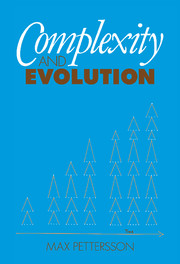Book contents
- Frontmatter
- Contents
- Foreword by Joseph Needham, FRS
- Preface
- Acknowledgements
- 1 Natural and other hierarchies
- 2 Major integrative levels
- 3 Some logarithmic forms of display
- 4 Physical range of integrated natural entities
- 5 Biological range of integrated natural entities (first part)
- 6 Biological range of integrated natural entities (second part)
- 7 Social range of integrated natural entities
- 8 Human societies (first part)
- 9 Human societies (second part)
- 10 Acceleration in evolution
- 11 Further allied accelerations
- 12 Aspects of number
- 13 Aspects of mass
- 14 Positive skewness
- 15 Quantitative conclusions
- Bibliography
- Index
9 - Human societies (second part)
Published online by Cambridge University Press: 18 January 2010
- Frontmatter
- Contents
- Foreword by Joseph Needham, FRS
- Preface
- Acknowledgements
- 1 Natural and other hierarchies
- 2 Major integrative levels
- 3 Some logarithmic forms of display
- 4 Physical range of integrated natural entities
- 5 Biological range of integrated natural entities (first part)
- 6 Biological range of integrated natural entities (second part)
- 7 Social range of integrated natural entities
- 8 Human societies (first part)
- 9 Human societies (second part)
- 10 Acceleration in evolution
- 11 Further allied accelerations
- 12 Aspects of number
- 13 Aspects of mass
- 14 Positive skewness
- 15 Quantitative conclusions
- Bibliography
- Index
Summary
This chapter will be mainly about the societies of sovereign states; about complex societies at Level 9. However, certain more general topics will be included.
In August 1993 the number of member states of the United Nations was 184 and as a first approximation the number of members of the UN can be taken as the current number of sovereign states in the world. Each sovereign state maintains order and governs within its own territory. It normally keeps a strict control of the movements of persons, other organisms, and artifacts (including money) across its borders. The populations of Britain, France, Germany, the United States and Japan are examples of Level 9 entities.
The society of each sovereign state is made up of the societies of settlements. And we must recognise that there is sometimes one or more important tier of government between that of our standard administrative unit and the society of the sovereign state. For instance each ‘State’ within the USA has its own influential government, but even California is not a sovereign state. It will be interesting to see whether, in the years ahead, something like a United States of Europe does emerge; or whether, on the other hand, the existing states co-operate more fully without actually fusing.
When, where, and how, did the early sovereign states arise? In the days of the first little farming villages, probably each community was more or less independent. An independent Level 8 society might be on good terms with some neighbouring villages and on bad terms with others.
- Type
- Chapter
- Information
- Complexity and Evolution , pp. 81 - 89Publisher: Cambridge University PressPrint publication year: 1996



